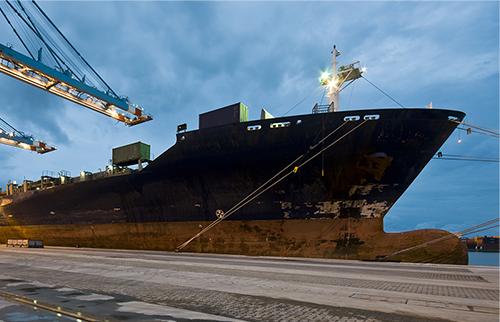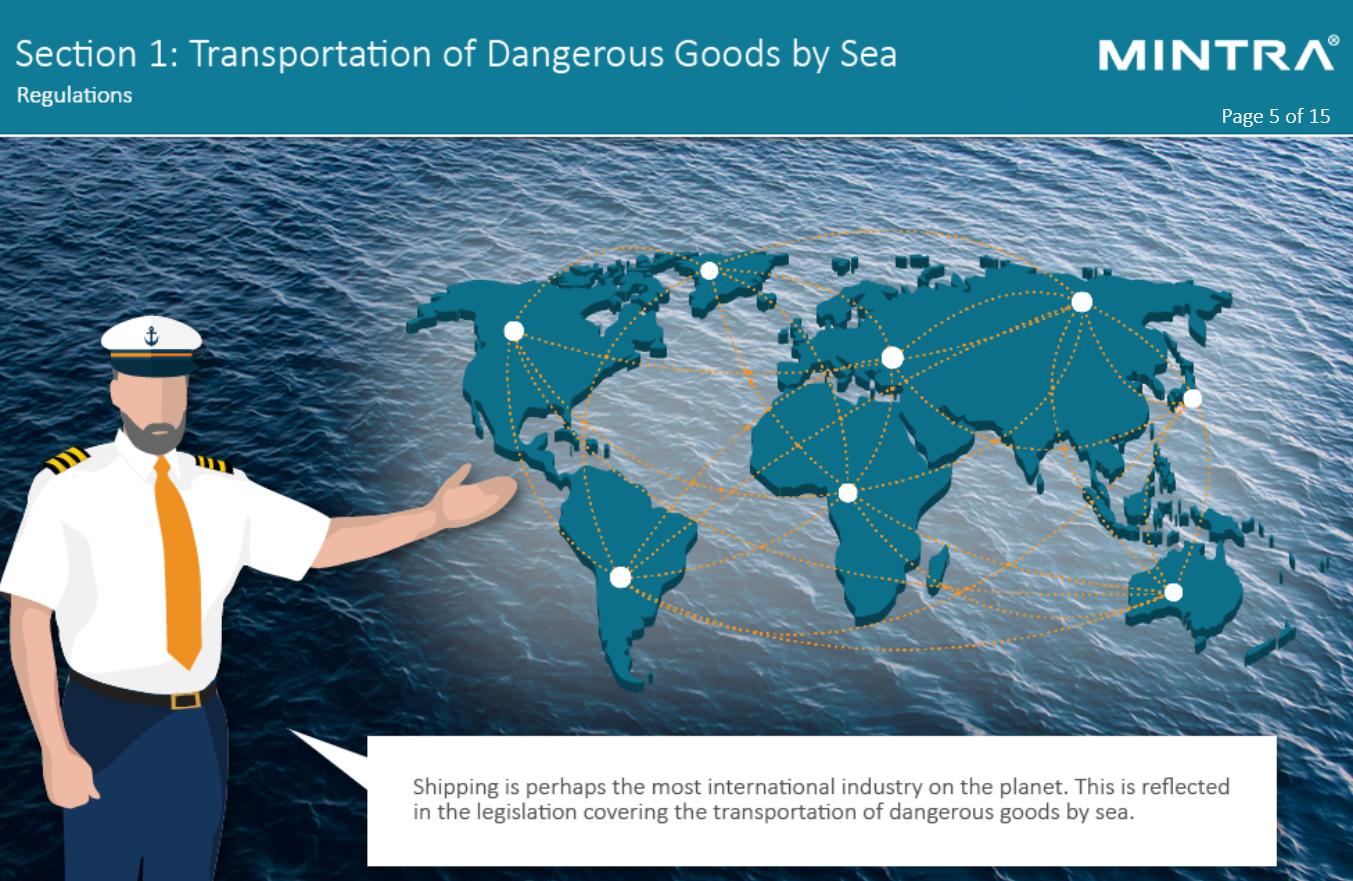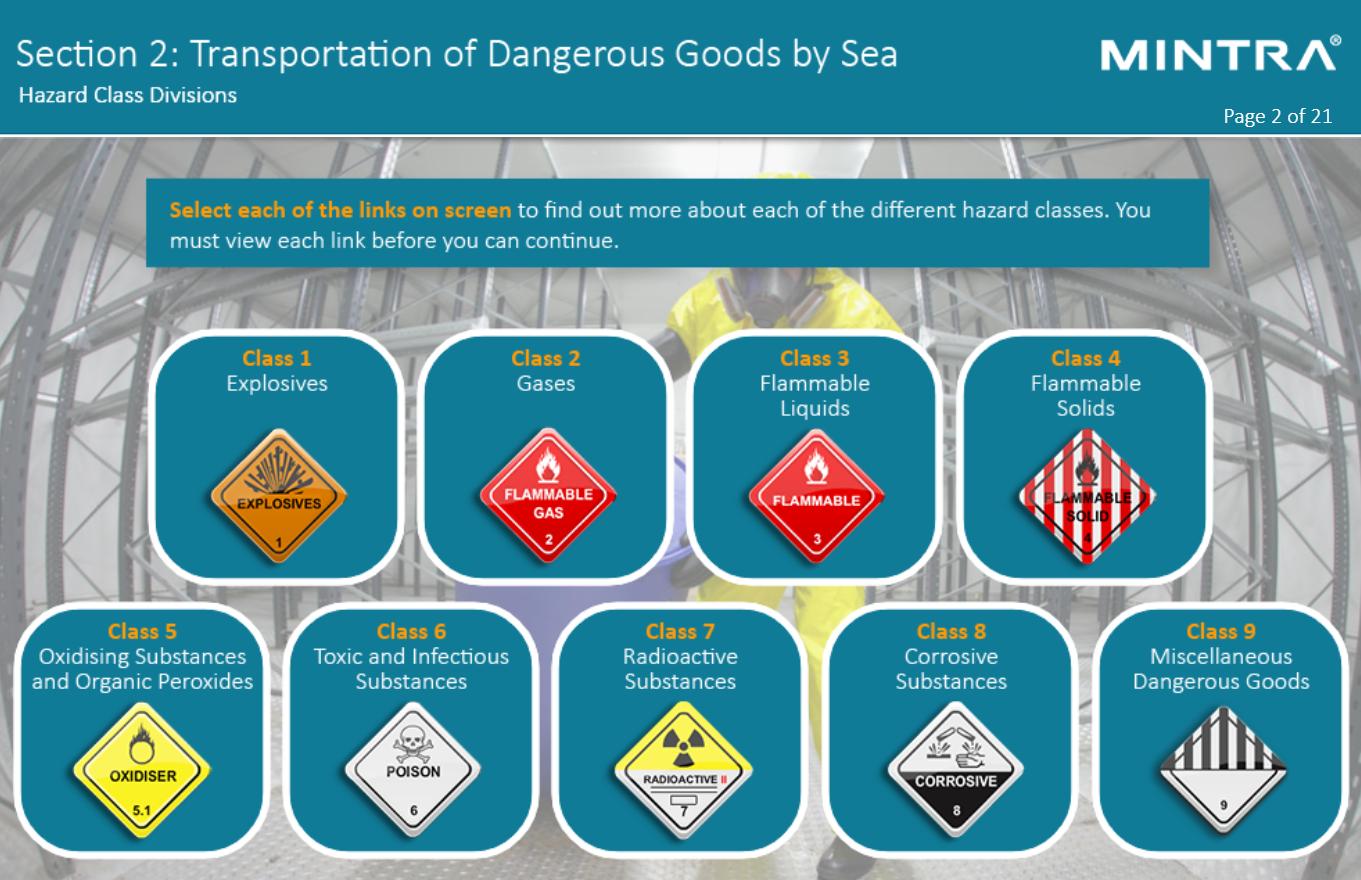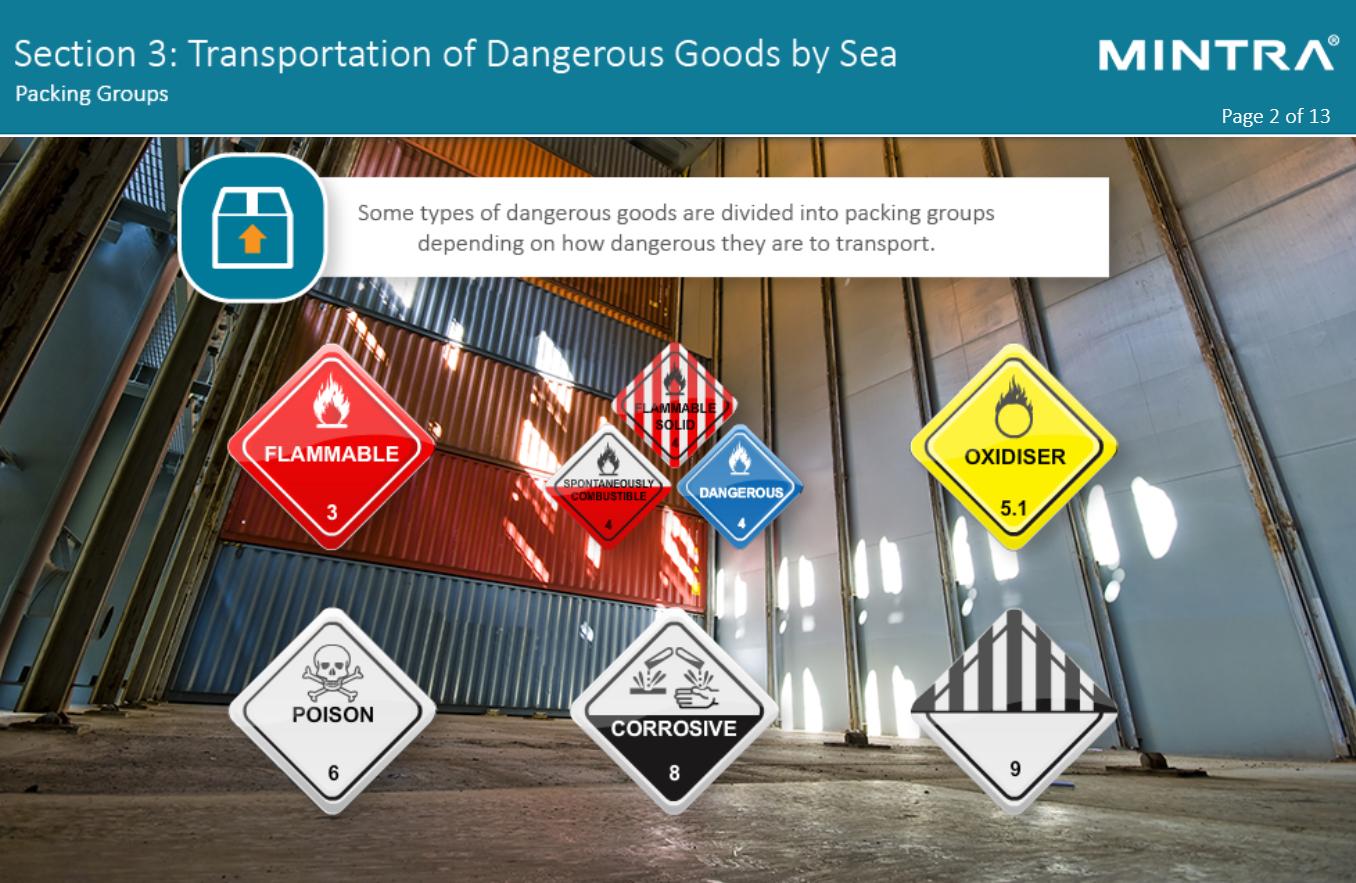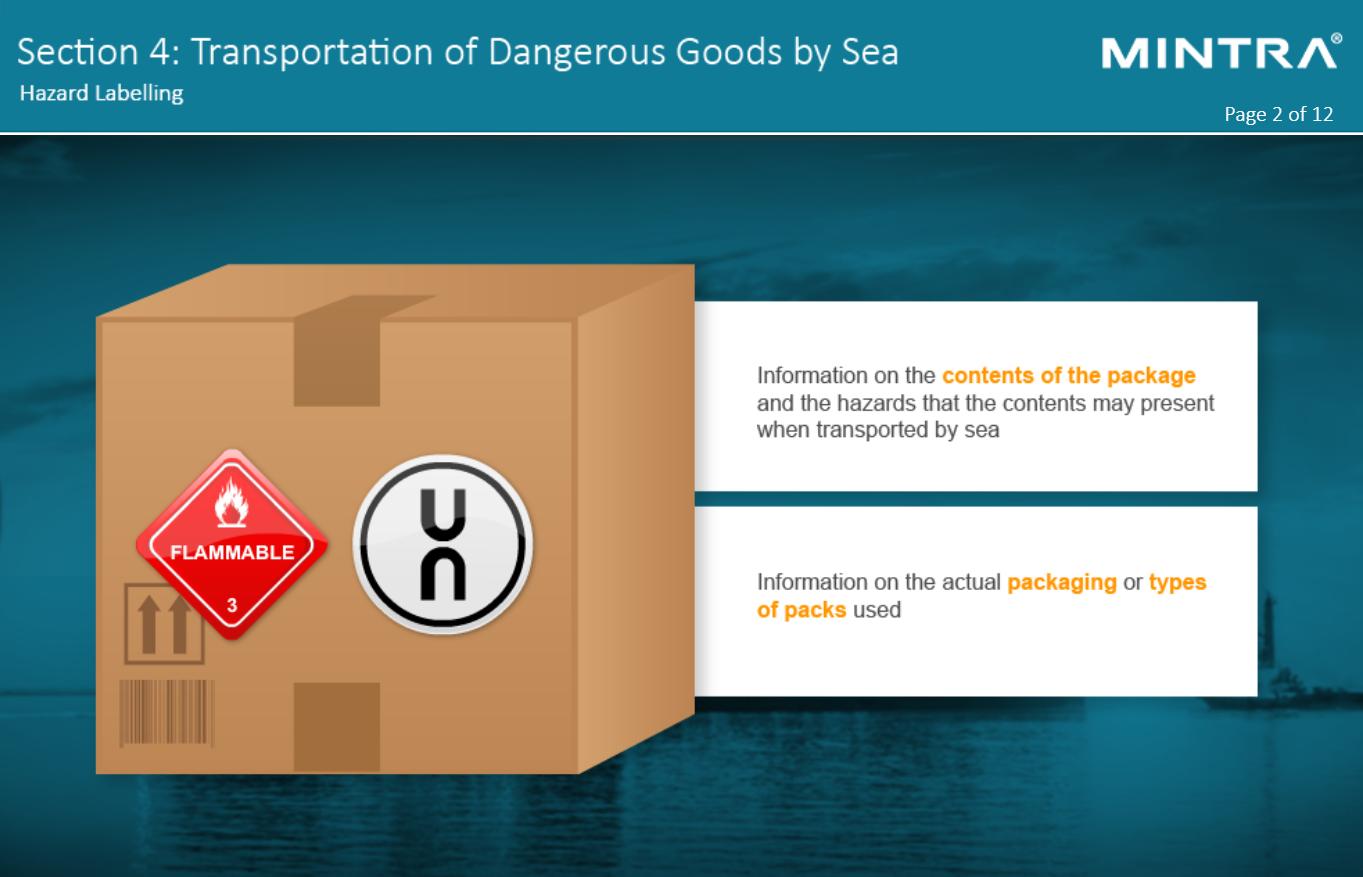Buy and assign to
multiple learners
Instant access
via email link
Instant certificate
via email
Further Information - Transportation of Dangerous Goods by Sea Training
Description
Who is the course for?
Personnel who are involved in the preparation of dangerous goods for transportation by sea.
Is previous experience required?
You do not need prior knowledge or experience to complete this course and it is assumed that you are competent in your designated role.
How will the course benefit me?
This course aims to provide learners with industry best practice in relation to the transportation of dangerous goods by sea. The course should enable personnel to recognise the classes of dangerous goods and to pack, mark, label and document articles and items correctly.
How will the course benefit my company?
By ensuring you are familiar with industry best practice in relation to the transportation of dangerous goods by sea.
What standards are referenced in the course?
• International Convention for the Safety of Life at Sea (SOLAS)
• International Maritime Dangerous Goods (IMDG) Code
Learning Objectives
Section 1: Introduction to Dangerous Goods
• Define dangerous goods
• Give an overview of the rules governing the transportation of dangerous goods
• Identify the responsibilities of personnel involved in transporting dangerous goods by sea
Section 2: Hazard Classes
• Identify the different hazard classes
• Define hazard class numbers and divisions
• Describe what is meant by a ‘marine pollutant’
Section 3: Packing and Packaging
• Identify the different packing groups
• Identify the different packing groups for radioactive material
• Describe how dangerous goods should be packed
• Identify different types of packaging
Section 4: Labelling
• Identify the information that should be detailed on hazard labels
• Identify the information that should be detailed on handling labels
• Identify risk label requirements
Section 5: Placarding, Stowage and Segregation
• Explain when placards are used and their requirements
• Describe how large units for goods transport should be marked
• Outline the requirements for the stowage of dangerous goods onboard
• Identify different storage categories
• Explain the requirements for segregation of dangerous goods
• Describe the requirements for compatibility groups
Section 6: Documentation
• Identify who is responsible for documenting dangerous goods
• Describe the requirements for transportation documentation
Section 7: Emergency Procedures
• Explain the purpose of the EmS guide and emergency schedule
• Identify where to find information on emergency procedures in the event of an incident involving dangerous goods
• Describe the actions to take in the event of an incident involving dangerous goods
System Requirements
• Internet access - users will need a device with a web browser and internet connection
• System - runs on computers, tablets and mobile devices using Windows 7 and above and MAC OS devices running IOS 11 and above
• Browsers - Edge, Chrome, Firefox and Safari
• Minimum browser size - none
• Audio - requires device speaker or headphones
Reviews
Insights & News
BSM recognised the evolving needs of a modern workforce and embarked on a journey to overhaul its training initiatives.
As we celebrate World Health and Safety Day at Work 2024, it’s only right to consider how far we have come since the landmark establishment
At Mintra, we're so much more than just a team—we're a force driving innovation and excellence in maritime training across Europe.
